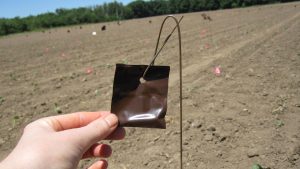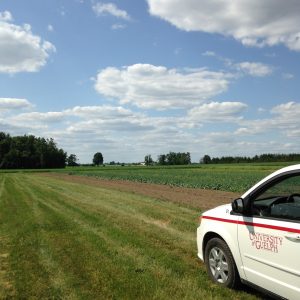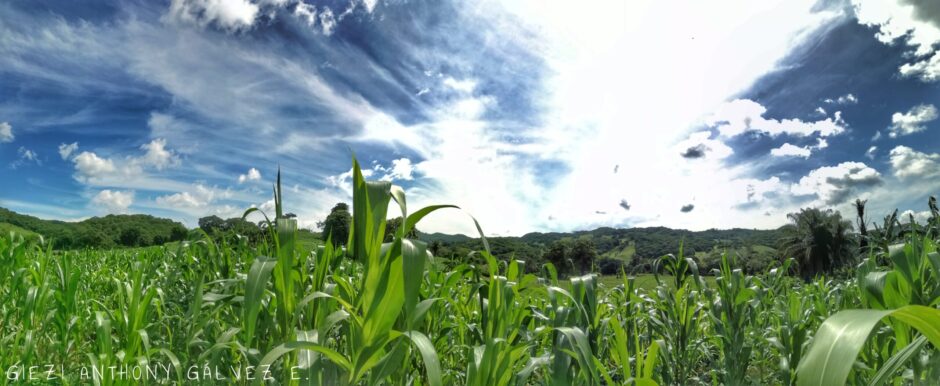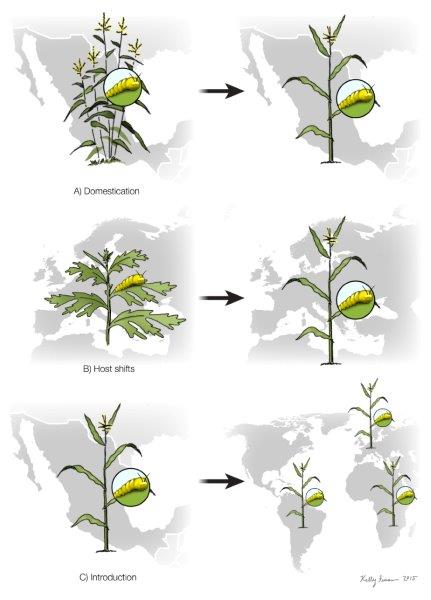With the beginning of summer last week came the onset of our season of field trials. Graduate student Elisabeth Hodgdon is spending the summer at the University of Guelph in Guelph, Ontario working with our Canadian collaborator Rebecca Hallett testing a new organic management strategy for swede midge, pheromone mating disruption.
Female insects secrete sex pheromones to attract males for mating. Pheromone mating disruption involves the application of large quantities of a pest’s sex pheromone within a field using slow release dispensers. When this chemical signal is ubiquitous in the field, the males become confused and cannot locate their mates (insert witty comment about confused males here!). Crop damage is reduced when the insects cannot mate and females do not lay eggs on the plants.

Pheromone dispenser in the field. Each semipermeable bag contains a small vial that slowly releases the midge pheromone throughout the season at a quantity 100x the amount produced by a single female in her lifetime.

University of Guelph Elora Research Station in southwestern Ontario
The main challenge associated with mating disruption of swede midge is that the pheromone is extremely expensive to synthesize for field application. This summer Elisabeth is testing whether a cheaper, racemic blend of the pheromone compounds will effectively confuse males and reduce damage in a broccoli test crop compared with the more expensive, chiral blend of pheromones naturally produced by the females and an untreated control. The treatments were set up on a commercial farm in New Hamburg, ON and at the Guelph Elora Research Station last week. She will collect trap data within the plots and harvest the broccoli at the end of the season to measure the treatments’ ability to improve marketable broccoli yields.
Swede midge is causing dire economic losses on organic vegetable farms in Ontario, Québec, New York and Vermont, and is spreading to nearby states and provinces each year. The midge was first documented in North America in southwestern Ontario in 2000 and populations have since become well established there, making the area ideal for researching new management strategies. We hope to further our collaborations with Canadian researchers in the future so that we may find solutions for growers in both countries.





